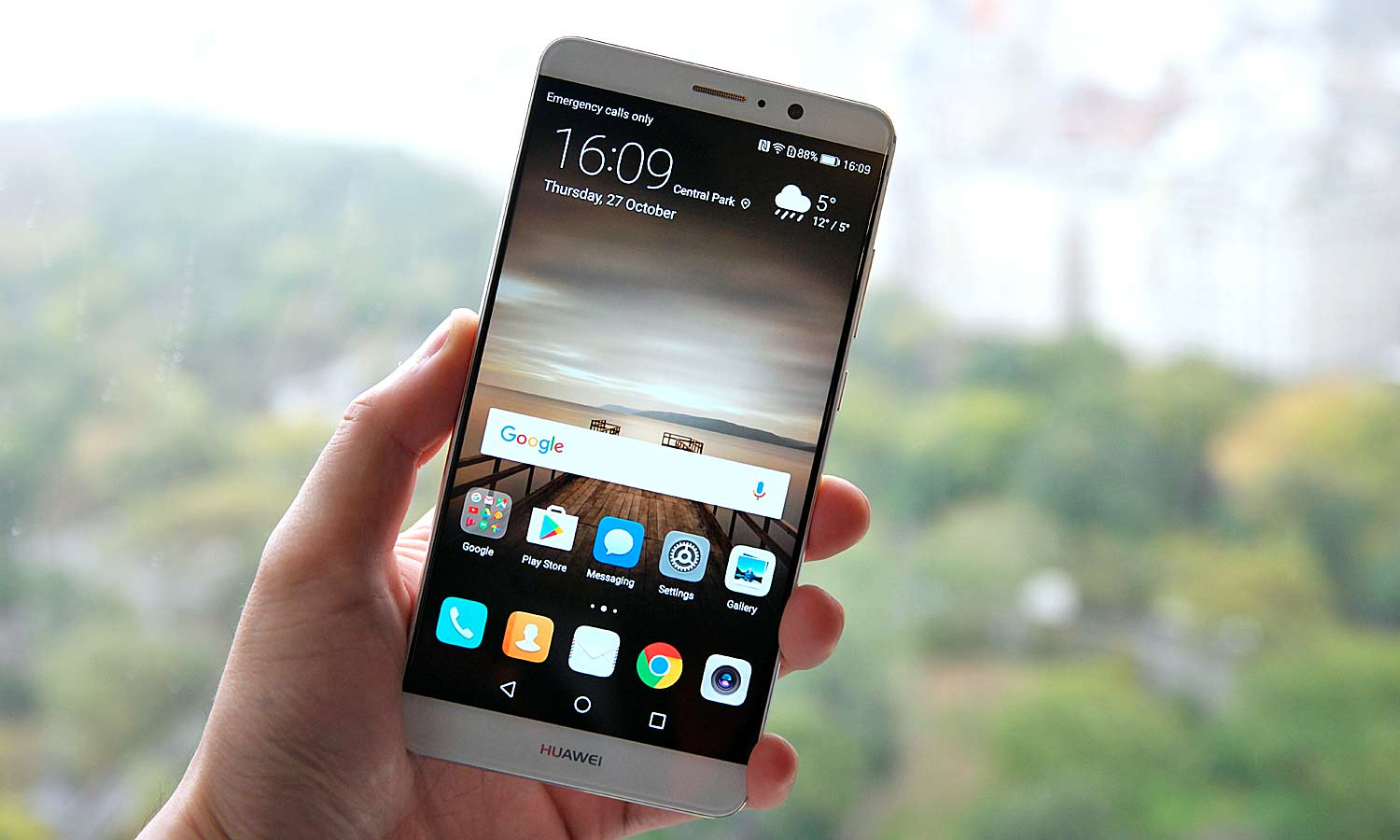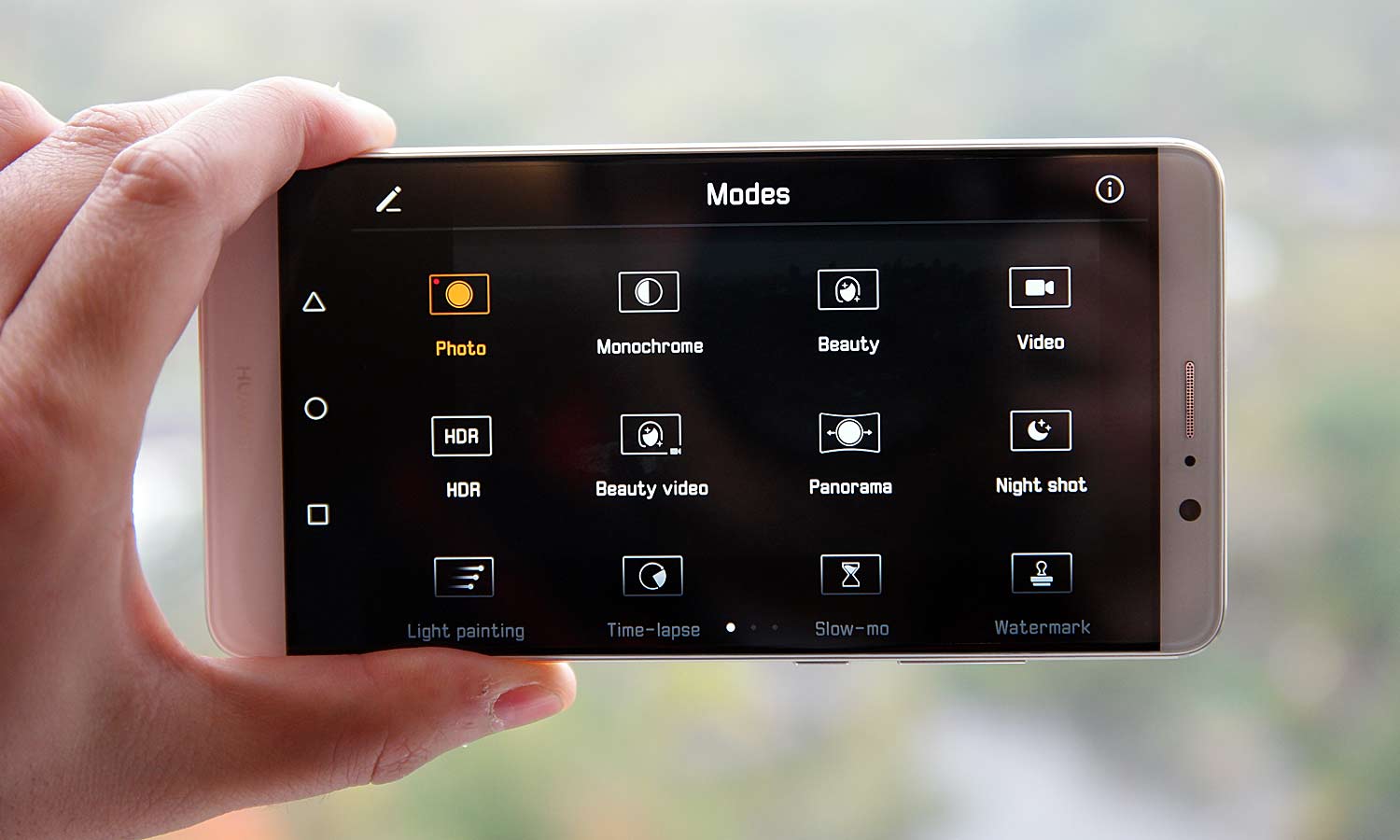Huawei Mate 9 Is a 5.9-Inch Beast That Won't Slow Down
Huawei is stepping up big with the 5.9-inch Mate 9. It packs the company's newest Kirin 960 processor and uses machine learning to prevent slowdown over time.
One of the biggest complaints people have about their phones is that they slow down over time. But Huawei believes it has figured out a way to keep the performance humming along for years with its new Mate 9.
The Mate 9 should certainly start out fast, as its powered by the new Kirin 960 system on a chip (SOC). When it unveiled the Kirin 960 last month in Shanghai, Huawei promised multi-core performance that rivals that of the A10 Fusion chip in the iPhone 7.

But coming fast out the gate isn't everything for phones, which can slow down as you use them. That’s caused by apps you’ve installed on your phone, Huawei’s Clement Wong told us during a briefing, as they compete for resources from the phone’s CPU.
To combat that slowdown, Huawei says that it's embedded machine learning and cleaning processes. The phone will regularly defrag that its storage so that apps will always load quickly, and will track which apps you use the most, so the most important ones will always be at the ready.
The result should be a phone that retains a performance edge over time, as similar Android devices begin to slow down with age, Huawei says. That claim is difficult to put to the test right away, but if Huawei delivers what it promises, that would make the Mate 9 an attractive choice, especially at a time when people are holding on to their smartphones longer.
MORE: Best Big Phones - Top-Rated Phablets
The Mate 9 will be the first phone to feature ARM’s Mali-G71 GPU, which includes support for the Vulkan graphics API. The result should be super smooth gaming with improved rendering. That’s noteworthy, as we’ve found past Huawei phones to beat the average smartphone when it comes to graphics benchmarks, but lag behind other flagship devices. We’re eager to see what impact that Mali-G71 GPU has on the Mate 9’s ability to match other top phones.

To tackle battery life, Huawei turned to a massive 4,000 mAh battery for the Mate 9. That's a pretty sizable advantage compared to phones such as the LG V20 and Samsung S7 Edge, which have capacities that top out at 3,200 and 3,600 mAh, respectively.
Battery life hasn’t been much of an issue for the Mate lineup — the Mate 8 is one of the longest-lasting smartphones we’ve looked at in the past year, lasting nearly 13 hours on our battery test. So among the battery improvements included with the Mate 9 are a SuperCharge feature that should charge the new device 50 percent faster than its predecessor. In detailing that feature, Huawei made sure to emphasize its protections against overheat — a not-so-subtle reference to the discontinued Note 7 and its battery woes.

As for the cameras, Huawei continues its partnership with Leica, so you get an 8-megapixel camera in front, and two cameras in back. One rear camera sports a standard 12-MP sensor, while the other is even more detailed at 20-MP, though it only shoots in black and white.
Both rear cameras have optical image stabilization and can be used simultaneously so that you can change a picture's depth of field on the fly. That means you can guarantee a nice shallow DoF for things like portraits, or dial in something deeper when you want to whole photo to look sharp. And unlike the new Portrait mode available on the iPhone 7 Plus, you can adjust the Mate 9’s depth of field to anything between f/2.2 and f/16.

Our one concern about the Mate 9's rear cameras concerns low-light performance, an issue we’ve experience in the past with Huawei phones. While daylight shots we took at a pre-launch briefing looked crisp and grain-free, the Mate 9’s low-light performance might not hold up as well. That's because both rear cams feature apertures of f/2.2, which lets in significantly less light than the respective f/1.7 and f/1.8 lenses on Samsung's Galaxy S7 and Apple's iPhone 7.
MORE: LG V20 vs Galaxy S7 vs Huawei P9: Mega Camera Shootout
Huawei’s Android skin, EMUI, gets an update with the Mate 9. EMUI 5.0 promises redesigned icons but the more noteworthy change will be simplified access to the phone’s features. Huawei says that more than 90 percent of the actions you can take with the phone — changing the phone’s Wi-Fi connection, for example — are accessible in three steps.

Other Mate 9 features include a handy IR blaster for controlling your home AV system, rear fingerprint sensor, a USB-C port with fast 5-amp charging, and a dual SIM tray where the second slot doubles as a microSD card reader. There's a headphone jack too.
One area I wish had gotten a little more love from Huawei involves the Mate 9’s 5.9-inch full HD screen. I feel like when screen size expands beyond 5.5-inches, the pixel density you get from a 2560 x 1440 Quad HD display makes text look sharper; a higher-res display will be extra important when Huawei inevitably makes a big push into mobile virtual reality.

We're also not a huge fan of the Mate 9's design. Its all-aluminum body looks fine and feels pretty sturdy, but it doesn't have as much personality as past Huawei phones including the Nexus 6P (which Huawei built on behalf of Google) or this year’s Honor 8.
Unlike Huawei's P9 earlier this year, the Chinese phone maker has confirmed that the Mate 9 is officially coming to the US. While we're still waiting on exact pricing and availability — the phone will cost €699 in Europe — we expect the Mate 9 to go on sale before the end of the year.
Sign up to get the BEST of Tom's Guide direct to your inbox.
Get instant access to breaking news, the hottest reviews, great deals and helpful tips.
Sam is a Senior Writer at Engadget and previously worked at Gizmodo as a Senior Reporter. Before that, he worked at Tom's Guide and Laptop Mag as a Staff Writer and Senior Product Review Analyst, overseeing benchmarks and testing for countless product reviews. He was also an archery instructor and a penguin trainer too (really).
